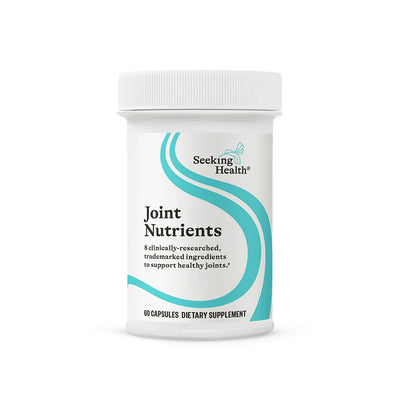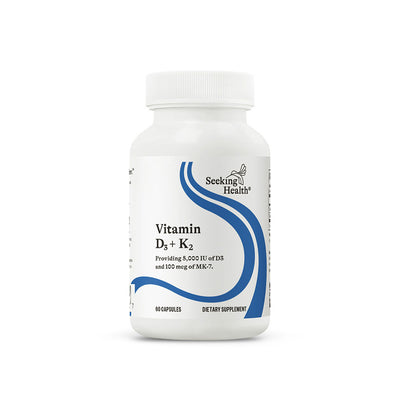The side effects of consuming folic acid are not well known.
Lab research shows us the many negative effects folic acid has on enzymes. We are now beginning to realize the repercussions it can have for human consumption as well. Ironically, consuming folic acid might lead to an actual folate deficiency!
Folate vs. Folic Acid
The term “folic acid” is often used interchangeably with folate (vitamin B9), yet it’s not the same. Folic acid is the primary man-made form of vitamin B9. It’s found in fortified foods and many vitamin supplements.
Folic acid is an artificial form of folate. It’s not the same thing as natural folate.
When the term “folic acid” is used from here on out, we are referring to the form of vitamin B9 that is man-made.
It’s important to note that research articles often incorrectly refer to “folate” as “folic acid.” Some of the research cited may use these terms interchangeably, even though they are not the same.
Using Folic Acid Side Effects
If you Google “side effects of folic acid,” you may find something like this from WebMD:

When it comes to getting information about folic acid side effects, it’s difficult. Most research is not comparing folic acid to true folate. Moreover, the side effects being studied are primarily immediate responses, such as intolerance and allergic reaction. There is little information on the long-term impact of folic acid in the literature.
Below, we’ve shared a list of adverse side effects. They are largely related to folic acid’s molecular structure not being identical to true folate.
If you are currently taking folic acid supplements, be sure to talk to your doctor about switching to supplements containing natural forms instead. Don’t know whether your supplement contains folic acid or natural folate? Ask your supplement company. Knowledge is power!
Dr. Ben Lynch, naturopathic doctor and the founder of Seeking Health, has studied folate deficiency and folic acid side effects for many years. He formulates all of our supplements to be 100% free of folic acid. You’ll only find true, natural, bioavailable forms of folate and other nutrients here.†
Shop Natural Folate Supplements Here
The Many Forms of Folate
The problem with folic acid is that it acts very differently in the body compared to true, natural forms of folate. Folate is the general and correct term for vitamin B9, an essential B vitamin needed daily from your diet. There are many types of folate, both natural and synthetic. There are also many terms for folates. Here are some of the most popular.
Types of Folates
- L-Methylfolate: This is a general term for folates that are methylated, such as L-5-MTHF. It is often referred to as just methylfolate.
- L-5-Methyltetrahydrofolate (L-5-MTHF): The most superior form of L-methylfolate found in dietary supplements because it is well absorbed and utilized. It is often referred to as just 5-Methyltetrahydrofolate (5-MTHF).†
- Tetrahydrofolate and Dihydrofolate: Reduced, natural folates found in fresh foods. These forms can be used for DNA and RNA synthesis. Your body can easily convert them into the active form of L-methylfolate. However, they need to be converted before they are absorbed into the body via the intestines.
- Folinic acid: Not to be confused with FOLIC acid (although they sound and look similar). FOLINIC acid is a natural, reduced form of folate. It’s a great alternative to L-methylfolate for those who are sensitive to methylated nutrients.
- Folic acid: The manufactured, oxidized form of folate that is used to fortify foods and some dietary supplements, and may have adverse effects on the body.
Man-Made vs. Synthetic
When your doctor prescribes you folic acid, they are saying you need more vitamin B9 in your diet. Because folic acid is the most common form of folate used in dietary supplements, they tell you to get folic acid.
The problem? Folic acid is artificial. It is not identical to natural folate.
Folic acid is molecularly different from natural folates, such as tetrahydrofolate, folinic acid, or L-methylfolate. Folic acid is “man-made.” Meaning, not only is it synthetically produced, but it is also in an unnatural form (that is not present in nature).
It’s important to understand that man-made is different than synthetic.
Many vitamins are synthetic, and that’s not actually a bad thing. Why? Because synthetic vitamins can be manufactured to exactly mimic the natural form of the vitamin. For example, L-5-MTHF can be synthetically produced into a dietary supplement. But it is also the primary biologically active form of folate in the human body. Folinic acid (calcium folinate) is a natural, non-methylated form of folate. While it is synthetically derived to make methyl-free supplements, it is also found naturally in the body.
Folic Acid is Unnatural
Folic acid (pteroylmonoglutamate) is the man-made, oxidized form of folate, which is NOT present in fresh, natural foods. Folic acid has no biological activity unless it is converted into folates. (1)
To be used by the body, it must at the very least be converted to a form of folate called tetrahydrofolate (THF). This conversion happens via the dihydrofolate reductase (DHFR) enzyme.

It must go through several more enzymatic steps before being converted into 5-methyltetrahydrofolate (5-MTHF) by the MTHFR enzyme. 5-MTHF (methylfolate) makes up 80 percent of the folate in your blood.

5-MTHF (methylfolate) is biologically active and can be used for methylation processes. Methylation is one of the most critical processes in your body for a healthy mood, fertility, pregnancy, breastfeeding, fetal development, cognition, sleep, and so much more.† (2)
As you can see in the above images from the StrateGene DNA Report, to convert folic acid into true folate, the following are required:
- Over seven functioning genes
- Over seven functioning enzymes (known as the folate pathway)
- Nutritional cofactors (nutrients that are required by enzymes to work)
- Healthy environment (low levels of heavy metals, reactive oxygen species, infections, toxins, etc.)
All this requires a lot of energy, and it is not always possible.
It can be challenging to obtain the amount of usable folate your body needs. This is especially true for those who have genetic mutations (polymorphisms) in their DHFR, SLC, MTHFD1, or MTHFR genes. Variants in these genes can cause dysfunction in the ability to convert folic acid into usable folate.
The Problem with Folic Acid
If folic acid is not converted, then it is left unmetabolized in the body. This unprocessed and unused folic acid has the potential to cause issues with human health. (4)
Blood lab tests that measure “folate levels” are actually assessing the entire folate pool in your blood. This includes unmetabolized folic acid, folinic acid, 5-MTHF, dihydrofolate, and tetrahydrofolate. Clinically speaking, this is only useful when there is frank folate deficiency where serum folate levels are very low. (5) This begs the question: if your levels come back fine, is your body able to use this unmetabolized folic acid?
Before being converted into dihydrofolate, folic acid has no biological purpose or benefit for the body. Remember, dihydrofolate is several enzymatic steps before methylfolate (5-MTHF), the primary active form of folate that your body uses.
In addition, the molecular structure of folic acid is slightly different than natural folates, such as 5-MTHF and folinic acid.
Folinic acid and 5-MTHF differ from folic acid in that they do not require DHFR enzyme transformation into an active form of folate.
When compared to natural folates in our diet, folic acid is oxidized (unusable). The folates used in the body are in ‘reduced’ forms (usable) and have slight but impactful structural differences. (4)

Because of these differences, folic acid does not always replenish a folate deficiency. (6)
Yet even without a mutation (polymorphism) in the folate pathway genes (i.e., DHFR, SLC, MTHFD1, or MTHFR), folic acid can still slow the enzymes in the pathway down. The problem isn’t only that our bodies can’t convert folic acid into usable folate very well. The bigger problem is that folic acid can slow our ability to even use folate by blocking folate receptors and folate transport. (3, 4, 7, 8)

The Body Prefers Folic Acid (and that’s not a good thing)
Another issue with folic acid has to do with binding affinity. Binding affinity refers to how strongly a substance binds at a receptor. The body, strangely enough, appears to prefer folic acid to true folate. That is, folic acid binds more readily to folate receptors compared to natural forms of folate. But keep in mind that binding affinity does not equate to usability. (4, 7, 8)
This leads to folic acid being transported and bound to receptors adequately, yet actual folate is not getting into the cells for use because folic acid is blocking the receptors. This is known as a functional folate deficiency. In this case, your lab tests will come back“normal” or even as “high folate,” but folate deficiency symptoms can be occurring. This is because lab tests measure blood folate levels, not cellular folate levels. (4, 9, 10)
Folic acid causes a FUNCTIONAL folate deficiency.
Why does this happen? Isn’t the body smart enough to know the difference between the chemical structures?
“Blocking receptors” is not exclusive to folic acid. Other substances are also known to have this effect.
Pharmacology creates drugs that are structurally similar to natural substances. These pharmaceuticals often take the place of natural compounds in the body. For example, drugs that block receptors for serotonin or dopamine are commonly used to prevent re-uptake and therefore provide more neurotransmitters to the brain, such as SSRIs. (11)
Toxic compounds can also clog receptors. For example, your body preferentially binds carbon monoxide over oxygen due to their similar chemical structures. So while carbon monoxide may look and act like oxygen, its effects are dangerously different. This is related to its high binding affinity at oxygen receptors. Essentially, it kicks out oxygen and takes its place. As a result, your cells can quickly be starved of oxygen, which is why carbon monoxide poisoning is fatal. (12, 13)
While folic acid hasn’t been shown to cause death, it does have potentially serious side effects, which are only recently beginning to emerge in research. Folic acid is proving to be detrimental to health by leading to high folate blood concentrations, but a deficiency of folate in the actual cells.
Folic acid leads to high folate blood concentrations, but very little folate in the actual cells.
It’s as if the body doesn’t realize that folic acid is unnatural. It ‘looks’ close enough to folate to get through the door. But once it’s inside, it clogs your cellular machinery and prevents any true folate from getting in.
10 Side Effects of Folic Acid
Not many people are talking about the direct and indirect side effects of consuming dietary folic acid supplements or food fortified with folic acid. Here are the potential side effects of folic acid.
Folic acid side effects:
- Folic acid does not metabolize well. It can remain elevated in the blood, especially in those with folate pathway gene mutations.
- Folic acid can result in a functional folate deficiency. Because of its chemical differences, folic acid does not always replenish a folate deficiency. Folic acid is associated with significantly low folate levels but high blood concentrations, known as a “functional folate deficiency.” (9, 14)
- Folic acid can skew lab work values. You can be suffering from folate deficiency effects, even though your folate levels in your labs look normal. This is because labs test the blood for folate, not the cells.
- Adverse health effects. High blood concentrations of folic acid may contribute to harmful effects, including cognitive and immune-related problems. (4)
- Folic acid is preferentially transported around the body. Folate transport proteins bind folic acid preferentially over true folate. Meaning, folic acid gets moved around the body before true folate will. (4, 8)
- Folic acid has a higher binding affinity than natural folates. Folate receptors bind folic acid preferentially over true folate. Meaning, folic acid is used first, before true folate. (7)
- Folic acid inhibits the MTHFR gene. Folic acid contributes to a pseudo-MTHFR enzyme deficiency due to enzymatic inhibition of MTHFR. In other words, it slows down the MTHFR enzyme function. (4)
- Folic acid reduces DHFR enzymatic function. This reduces biopterin recycling, thereby contributing to a biopterin deficiency. Biopterin is important for processing brain chemicals and circulatory health. (4)
- Folic acid can mask a vitamin B12 deficiency by bypassing the metabolic block in nucleic acid production, allowing cell division to occur without enough methyl groups. (4, 15, 16)
- B12 deficiency + high folic acid can be harmful. B12 deficiency, along with high blood levels of unmetabolized folic acid, can lead to harmful effects such as anemia and cognitive impairment. (17)
Imagine, all together, what these side effects could add up to? It’s easy to see how a functional folate deficiency occurs. Small changes in enzyme and cellular function can lead to big side effects!
Take Folate, Not Folic Acid†
Dr. Ben Lynch, the founder of Seeking Health, specializes in MTHFR and folic acid research. He suggests avoiding folic acid supplementation and advocates for consuming bioavailable, structurally similar forms of natural folate such as L-methylfolate and folinic acid.†
While there are prescription drugs that contain folate, you can easily get L-5-MTHF and methyl-free folinic acid over-the-counter. However, it is recommended that you always talk to your healthcare professional before considering the use of any supplement.
Supplementation with L-5-MTHF an excellent option as this is the most natural, superior form of supplemental folate, and can help reverse a folate deficiency better than folic acid.† (18)
B complex vitamins are a great way to get your full range of B vitamins along with your folate. Most multivitamins contain B vitamins (including folate) and other vitamins and minerals you need every day.
When choosing a B complex or multivitamin, be sure to always read the label to see what type of folate it contains. If it contains folic acid, put it back on the shelf!
Opt for supplements that contain L-Methylfolate (L-5-Methyltetrahydrofolate, 6(S)-L-Methyltetrahydrofolate) or folinic acid (calcium folinate). All of the supplements at Seeking Health are entirely folic acid-free and contain only high-quality, bioactive forms of folate. The forms that your body can actually recognize and utilize!†
Shop Seeking Health Folate Supplements Here
The Bottom Line
Folic acid is used interchangeably with “folate” in research, foods, supplements, and even at your doctor’s office. But folic acid is not the same thing as true folate.
Folic acid is the man-made form of folate. It was created to fortify processed foods that have been stripped of their natural folates. This was initially thought to help replenish folate deficiencies cheaply and conveniently for mass food production.
However, research and clinical experience have shown that folic acid can create a functional folate deficiency by binding to folate receptors and transporters. Yet, little ends up being used by the body. This means your lab testing may show normal or even high blood folate levels, yet you could be experiencing a masked folate deficiency. In this way, folic acid can block folate utilization.
Though you cannot easily test for unmetabolized folic acid or a functional folate deficiency, you can indirectly test for markers that may point to a functional folate deficiency.
Dr. Ben Lynch recommends replacing folic acid consumption with natural folates such as:
- L-5-MTHF
- L-Methylfolate
- Dihydrofolate
- Tetrahydrofolate
- Folinic acid (calcium folinate)
Supplementing with superior, natural folates can help to quickly and easily raise your true folate levels. Always ensure that your dietary supplements contain natural forms of folates and not folic acid. Though our current healthcare system does still use and recommend folic acid, the hope is with more education, we can be better informed about the risks. Our mission here at Seeking Health is to help you feel empowered to ask questions, research, and make the best choices for your health.
Shop Natural Folate Supplements Here

References
- https://www.ncbi.nlm.nih.gov/books/NBK114310/
- https://www.ncbi.nlm.nih.gov/pmc/articles/PMC1734882/
- https://pubmed.ncbi.nlm.nih.gov/32722170/
- https://academic.oup.com/ajcn/article/87/3/517/4633283
- https://jcp.bmj.com/content/71/11/949.long
- https://www.ncbi.nlm.nih.gov/pmc/articles/PMC2730961/
- https://pubmed.ncbi.nlm.nih.gov/17616776/
- https://www.cell.com/cell/fulltext/S0092-8674(06)01347-X
- https://pubmed.ncbi.nlm.nih.gov/19022952/
- https://www.ncbi.nlm.nih.gov/pmc/articles/PMC3934218
- https://pubmed.ncbi.nlm.nih.gov/22860803/
- https://pubmed.ncbi.nlm.nih.gov/32860873/
- https://pubmed.ncbi.nlm.nih.gov/20943125/
- https://www.ncbi.nlm.nih.gov/pmc/articles/PMC4336532/
- https://pubmed.ncbi.nlm.nih.gov/17052662/
- https://pubmed.ncbi.nlm.nih.gov/17209170/
- https://pubmed.ncbi.nlm.nih.gov/17209196/
- https://academic.oup.com/jn/article/148/6/885/5034059
‡ This information is for educational purposes only. No product results are implied.











